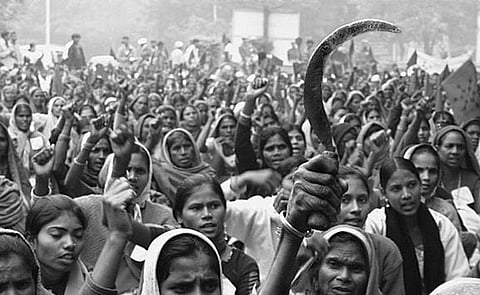Converging into a whole
"Heaven is a forest of miles and miles of Mohua trees / And hell is a forest of miles and miles of Mohua trees with a forest guard in it!" Thus goes a song of the Muria Adivasis in the forests of Bastar in central India. Encapsulated in this simple expression, however, is a very complicated history: of how India's vast forests were turned into a money-making industry, first at the hands of the British and then by independent India.
In 1855, Governor-General James Broun-Ramsey, better known as Lord Dalhousie, issued the Charter of Indian Forests, which declared much of the country's forest resources to be state property. Overnight, those who lived in these forests, mostly Adivasis, became 'intruders' in their own homes, and their livelihood practices, such as hunting-gathering and shifting cultivation, were termed 'unscientific' and deemed social evils. In many instances, they were forced to take up the plough or rendered bonded labourers or were simply driven out of the forests into uncertain futures. Forest-dependent communities increasingly lost track of their roots and, for decades, were unable to come to terms with the alien existence into which they were thrown. As the years passed, however, various resistance movements did coalesce, eventually taking on a new shape: community forest governance, or CFG.

